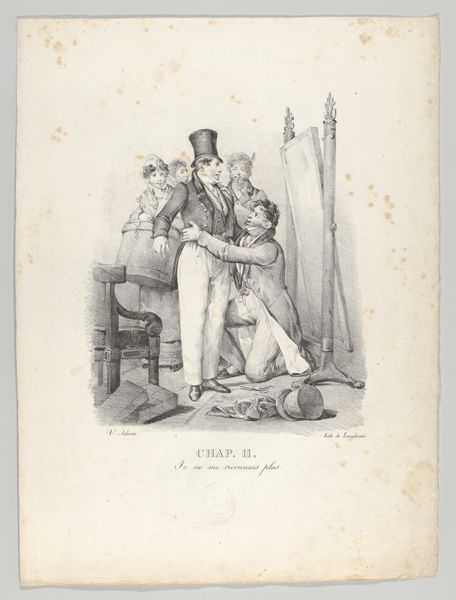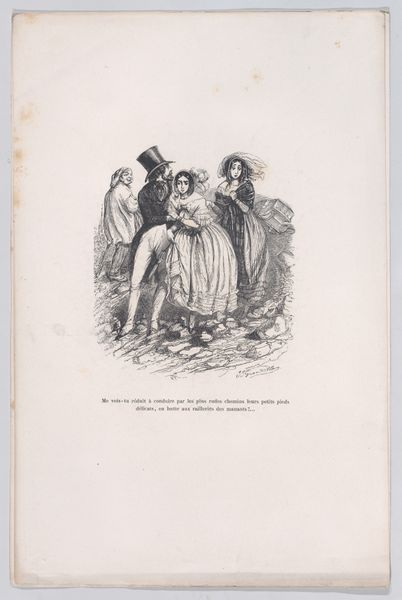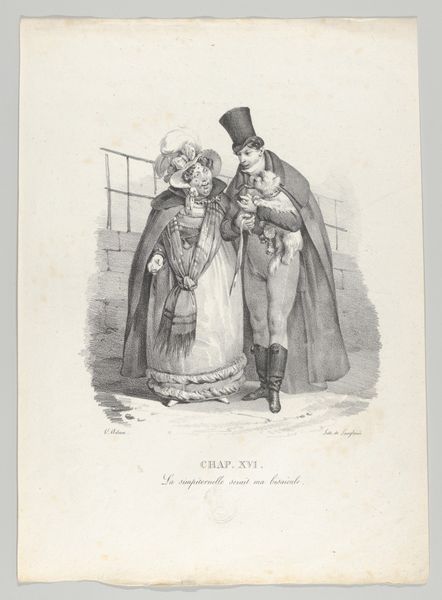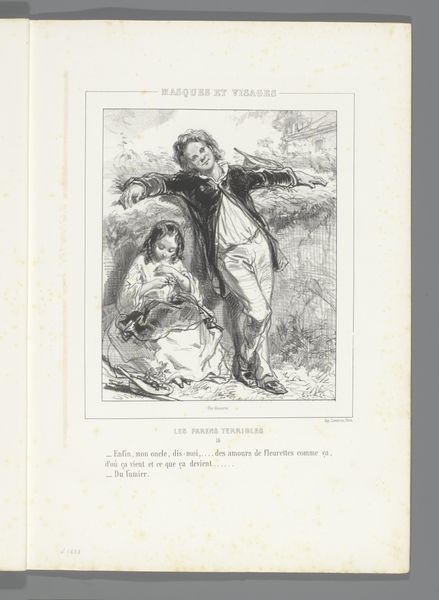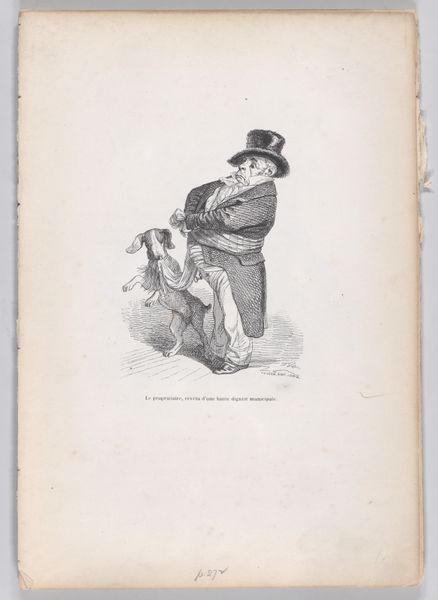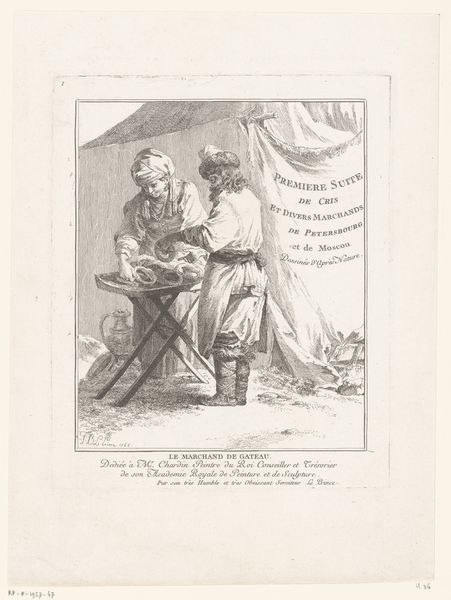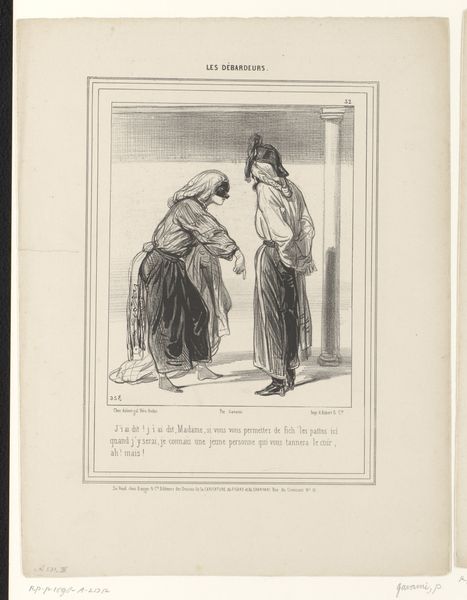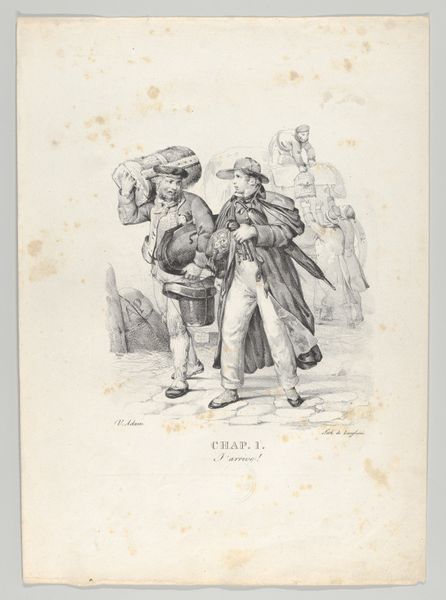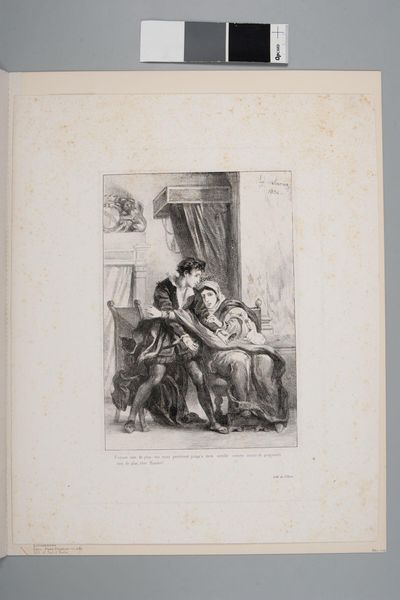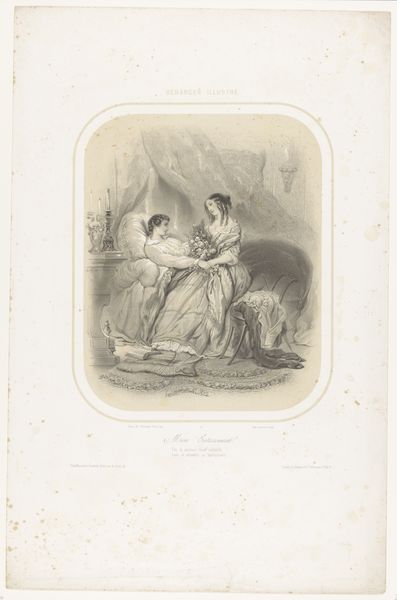
La Né d'une Modiste, 1828 : Chap. XVII: Je suis (...)heureux, C'est sur ! c. 1828
0:00
0:00
gottfriedengelmann
Rijksmuseum
watercolor
#
figuration
#
watercolor
#
romanticism
#
watercolour illustration
#
genre-painting
Dimensions: height 344 mm, width 266 mm
Copyright: Rijks Museum: Open Domain
Curator: Look at this vibrant piece by Gottfried Engelmann, "La Née d'une Modiste, 1828: Chap. XVII: Je suis (...)heureux, C'est sur !," dating back to around 1828, currently held at the Rijksmuseum. I'm particularly struck by the title's placement within the image itself, creating an almost meta-narrative feel. Editor: My initial impression is pure theatrical joy! The man in the foreground positively radiates a boisterous energy, even through the aged watercolour illustration. What exactly is it made of? The quality of the page looks degraded. Curator: It is watercolour. Knowing Engelmann, who was instrumental in developing chromolithography, this likely functioned as either an experimental study or perhaps was even later reproduced using his printing innovations. What I am wondering is how was he so free with using that technique as well. It allowed such flexibility in production and wider dissemination. This particular copy looks worn— handling, display conditions—each detail becomes part of its evolving history and accessibility. Editor: Absolutely! The staining and wear around the edges narrate its past— how it was held, stored, maybe even disregarded for periods before being rediscovered and preserved within the institution of the museum. Do you know whether similar images also had visible titles? And why the woman on the right seems so unenthused by her companion's glee, or perhaps its just an expectation given the patriarchy that surrounds the romantic style. It does however have a tinge of irony to its name. Curator: The juxtaposition between the central figure's overstated happiness and the subdued response from the other figures introduces interesting tensions regarding performance, gender, and perhaps class expectations during this period of Romanticism. But it appears to function mainly in a visual format which can have many interpretations. Editor: The layered materiality and history— from initial creation to the present day — shape our encounter and inevitably affect its lasting cultural implications within museums and art historical canons. Curator: Precisely. Examining the context, materiality, and shifting social valences surrounding a piece helps me appreciate art, while moving beyond conventional art historical confines. Editor: It’s really satisfying to observe art, both from the perspective of art history but also taking into consideration materiality so as to appreciate how that also affects artistic merit and production.
Comments
No comments
Be the first to comment and join the conversation on the ultimate creative platform.

